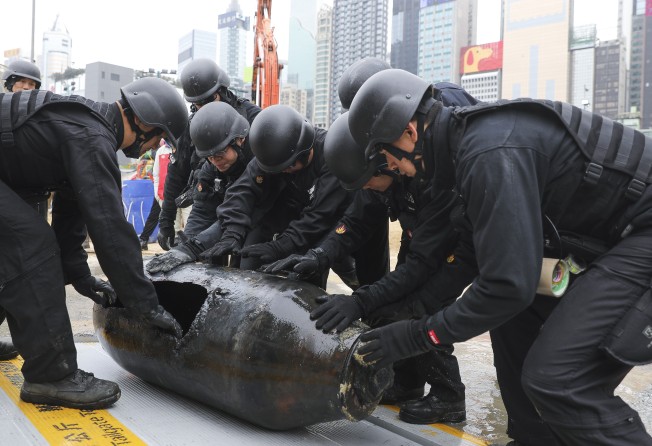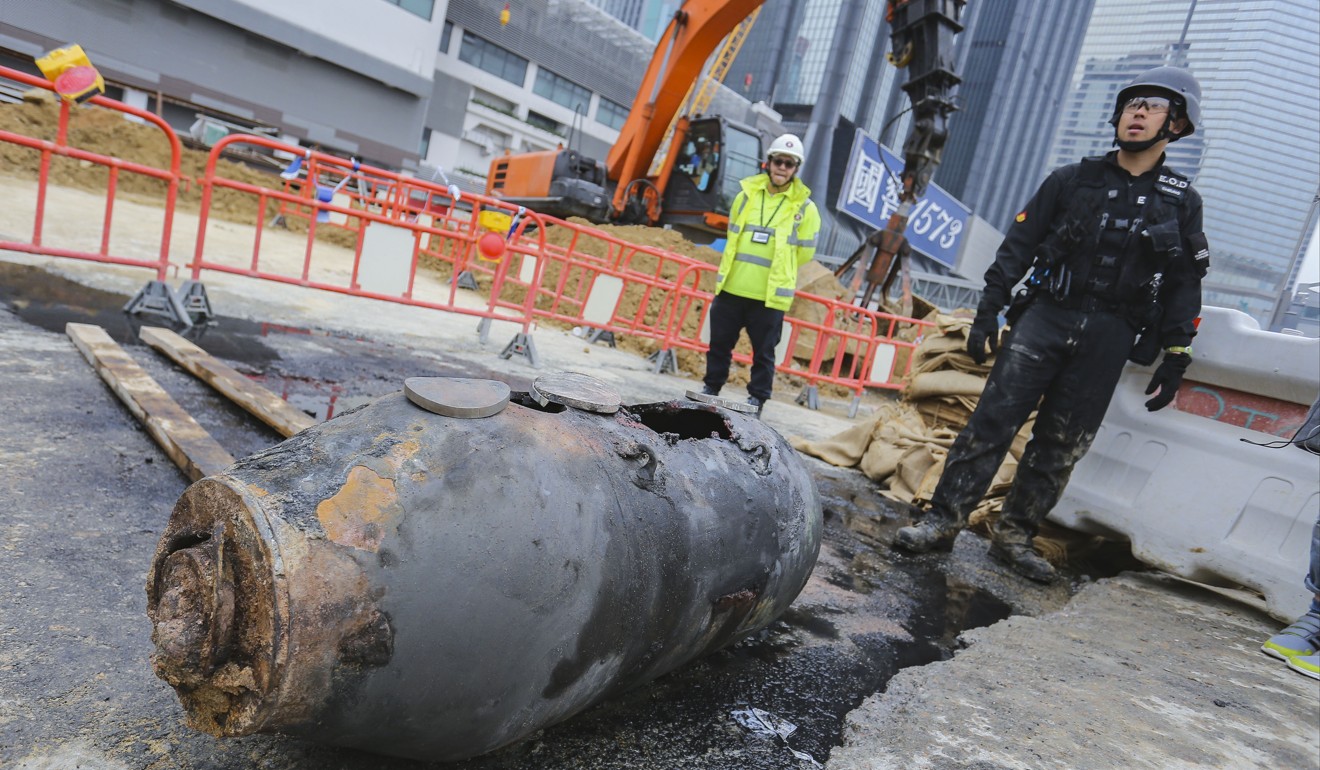
Meet the heroes behind the 50-hour wartime bomb disposal operations in Hong Kong
Wearing heavy protective gear, the bomb disposal officers work in situations where one wrong move could be the last one they make

After two bomb disposal operations that lasted 50 hours in total over the past five days, the Hong Kong police unit responsible for disarming explosives can finally take a breather.
Fifteen officers from the Explosive Ordnance Disposal Bureau (EOD) worked through the night to defuse a 450kg (1,000lbs) wartime bomb uncovered on Wednesday at a building site in a busy commercial district of the city.
Wearing protective gear including suits weighing 30kg (70lbs) and 11kg helmets, the EOD officers worked in the cold and wet. They described the nearly 24-hour operation as “dirty, difficult and dangerous.”
“We couldn’t sleep. In such situations, the longer [the operation] takes, the more unstable [the bomb] is. That’s why we had to work as quickly and as safely as possible,” a haggard officer told the Post after the operation on Thursday.

To defuse the bombs, officers drilled holes in the metal casing, removed the explosives and burned them using a special igniter that capped the temperature at below 280 degrees Celsius (536 degrees Fahrenheit), according to senior EOD officer Tony Chow Shek-kin.
Risks involved in such operations left officers facing “the cold fact that you will either have complete success or total failure,” Adam Roberts, a veteran bomb disposal officer, wrote in a letter to the Post last February to thank the public for their support during an operation to defuse a 220kg bomb at a Pok Fu Lam construction site the previous month.
Roberts took part in the two latest operations, spending his birthday on Saturday disarming the first device.
Hong Kong has not suffered a catastrophe from unearthed wartime bombs, but there have been numerous accidents overseas. In some incidents, a bomb disposal officer made an error due to fatigue and stress, and some were just “simply cases of back luck”, Roberts wrote.
“We do not rely on luck, we rely on experience, training and the quality of our brother officers; luck is something we seldom discuss.”
Established in 1972, the EOD unit had by 2014 grown to 41 members, including six full-time officers, five assistants and 30 reservists trained to defuse home-made bombs. Four were women, all reservists.

Their tasks extend beyond bomb disposal to post-blast investigation, underwater operations and the handling of chemical, biological, radiological and nuclear incidents.
The unit carries out over 100 operations each year on average. EOD officers also deal with “plenty of grenades and mortar rounds” annually, a police spokeswoman said. These tend to appear in former battlefield areas that are now country parks.
To qualify as EOD officers, they had to undergo four years of training, even learning how to build a bomb. They could spend weeks and months in Britain or the United States, where the skills they learn include evidence collection and handling court cases.
The unit operates on a “minimum risk” or “one man risk” principle, which means that the least number of people should bear the largest risk.
A team usually consisted of only two people – a bomb disposal officer and an assistant, referred to simply as No 1 and No 2, Roberts said. No 1 does the hands-on disposal and No 2 ensures that the No 1 has the equipment to do the job; each relies heavily on the other.
At a time when the force’s image has taken a hammering over incidents related to the 2014 Occupy protests, the EOD unit offers a chance to rebuild citizens’ confidence in the police.
Many internet users expressed gratitude to the EOD officers on the police’s Facebook page, where two live videos drew over 130 encouraging comments.
One user, Francis Cheung, wrote: “A most difficult job extremely professionally done!”
In February 2014, the EOD unit defused a 900kg bomb in Happy Valley, the largest wartime bomb dug up in Hong Kong. The device, an AN-M66 bomb, was the biggest of its kind dropped on Hong Kong by US bombers. When it was found, more than 2,000 people were evacuated from nearby buildings.